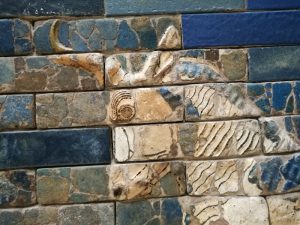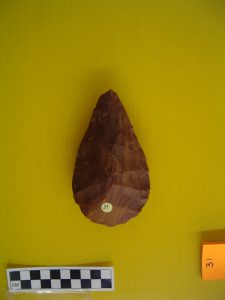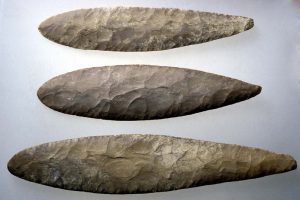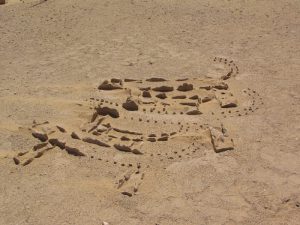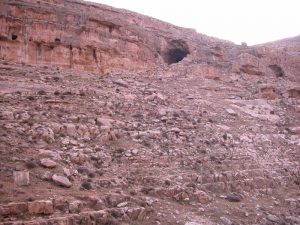All 176 Canteen Kopje cores photos are available on request from prehistoricglailee@gmail.com
Previous/Alternative Names – Canteen Kop (Goodwin and van Riet Lowe 1929), Canteen Kopje, Klipdrif (Beaumont 1990a).
Location – Coordinates 28o32″30’S and 24o31″50’E (Beaumont 1990a). The site is located just over a kilometer southeast of the town of Barkley West.
History of Research – The quantity of stone debris at the site, estimated in the millions of items, is astonishing. Abbé Breuil was quoted as saying, “…not only are there enough specimens to fill a museum to overflowing, but to build it of them also”. In 1869, the first alluvial diamond of South Africa was discovered here. This fact, rather than the richness of the prehistoric site, is the reason that it was declared a South African national monument in 1948. Between these two dates, extensive diamond digging changed the face of the whole area (Beaumont 1990a). Recently, further digging has taken place in the vicinity of the site, causing massive damage to the archaeological layers (Beaumont and McNabb 2001).
Excavated Area – A few pits and one excavation area were dug at Canteen Koppie. No exact location is given.
Date – Stone artifact typology is the only criterion for dating the site. Beaumont has suggested dating Stratum 2a to the Early
Raw materials – Canteen Koppie was identified by excavators as a factory site for the production of Acheulian large flakes. The site contains abundant fresh exposures of andesite cobbles and boulders (Beaumont and McNabb 2001), the latter serving as the main raw material.
